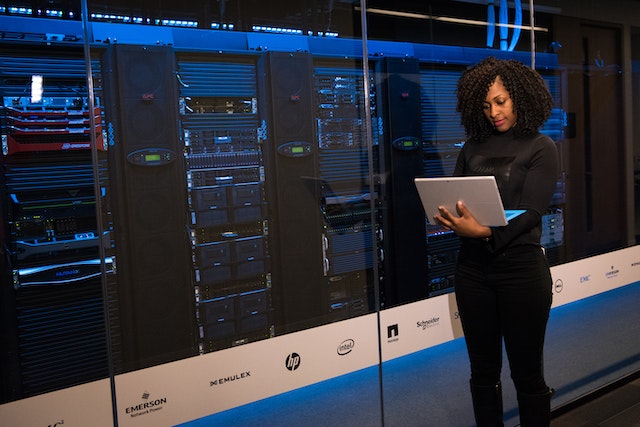If you have a data center, you should have a disaster recovery plan for it. But what exactly does a disaster recovery plan for a data center include? And how do you make sure your disaster recovery plan is both appropriately documented and capable of facilitating action in an emergency?
What Is a Data Center Disaster Recovery Plan?
A data center disaster recovery plan is a documented strategy that you’ll follow in the event of a disaster that impedes or disrupts your data center operations. For example, if your data center is hit by a destructive natural disaster, or if it’s attacked by cybercriminals, your disaster recovery strategy can maximize uptime, minimize risk, and facilitate a speedier recovery to normalcy.
Many disaster recovery plans also outline potential risks and threats for prevention purposes; it’s an opportunity to better understand the biggest threats that your data center faces so you can minimize your exposure to them.
Why Is a Data Center Disaster Recovery Plan Important?
Why is your data center disaster recovery plan so important?
- Minimizing risk. First, this is an opportunity for you to minimize risk. If you better understand the risks that your data center faces, you can better control them.
- Better understanding threats. Data centers face a wide range of threats, including natural disasters, external threats, and internal threats. If you know what these threats are and what they look like in practice, you can recognize them faster and defend against them more effectively.
- Maximizing uptime. Ultimately, your disaster recovery plan is about maximizing uptime. That means preventing certain threats from occurring, minimizing the impact of some threats, maintaining operations with redundant backups, and restoring operations to normal after the threat is over.
- Maintaining compliance. If you’re not convinced by those benefits, you should be motivated to put together a disaster recovery plan for the sake of compliance. In some areas and in some industries, you’re legally required to protect user data.
- Minimizing recovery costs. Disaster recovery is always expensive, but a more robust disaster recovery plan can minimize those recovery costs, helping your organization flourish even after it’s hit by a devastating attack.
What Should Your Data Center Disaster Recovery Plan Include?
There’s no universal “right” form for a disaster recovery plan, but solid plans should include at least the following:
- Downtime tolerance analytics. First, you should have some information on your data center downtime tolerance. In other words, in what contexts and in what timeframes is downtime acceptable to your organization? Obviously, downtime is never a good thing, but isolated and short periods of downtime may be tolerable for keeping your organization running. Identify these parameters to serve as working targets for your disaster recovery strategy.
- Total inventory. This is also an opportunity to take inventory of all your IT assets and network structures. Before you can properly assess risk or plan how you’re going to recover in the wake of a disaster, you need to know what you’re working with.
- Strategic weak points. You’ll also need to identify your strategic weak points – and yes, every organization has them. Where are the gaps in your security strategy? Are there any weaknesses in your data centers that need to be addressed?
- Recovery objectives. In pursuit of disaster recovery, what are your biggest objectives? What systems are most critical for your fundamental operations and how quickly do you need to get them back online? What would be considered a successful recovery?
- Risks and threats. What are your biggest risks and threats? A general recovery strategy can help you defend against almost anything, but it’s helpful to identify the most likely sources of a disaster, so you can be better poised to address them.
- Roles and responsibilities. Who on your team is responsible for managing disaster recovery, and what are their critical responsibilities? Who’s in charge of stepping up and coordinating resources in the immediate aftermath of a threat?
- Prevention strategies. Good disaster recovery plans include prevention strategies – in other words, habits and practices that can minimize the possibility of having to recover from a disaster in the first place.
- Disaster recovery sites. It’s a solid practice to have disaster recovery sites that contain backup servers and resources you can rely on in the absence of your main data center operations.
- Alerts and immediate response plans. You should set up automatic alerts and immediate response plans, so you can identify threats in progress and start addressing them as quickly as possible. Automation is critical for this, since it reduces the role of human error while simultaneously facilitating faster response times.
- Communication protocols. How is your team supposed to communicate with each other and take action after the immediate, first wave of responses? Good communication is essential for disaster recovery.
- A plan to practice. You also need a plan that can be habitually practiced, like a fire drill preparing you for potential emergency. Practice is the only way to feel confident about your response plan.
With a more thorough disaster recovery plan in place, your data center will operate much more reliably, and you’ll have much tighter control over your biggest external and internal threats. You may not be able to unilaterally prevent every conceivable disaster from reaching your data centers, but you can have a reliable disaster recovery strategy on standby to help you bounce back.

